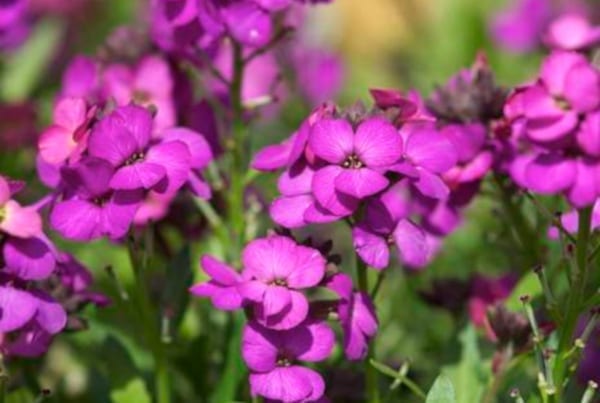Erysimum, more commonly known as wallflowers, are spring- to summer-flowering plants that provide vibrant displays of colour. Many varieties are hardy perennials and have attractive evergreen foliage, adding structure and aesthetic value to the garden even after the flowers have faded.
These easy to grow plants are perfect for adding colour and fragrance to borders and containers. Position in a sunny spot and enjoy months of flowers, from spring well into summer – and sometimes beyond.
View our collection of plantsErysimum Varieties
Erysimum ‘Bowles’s Mauve’
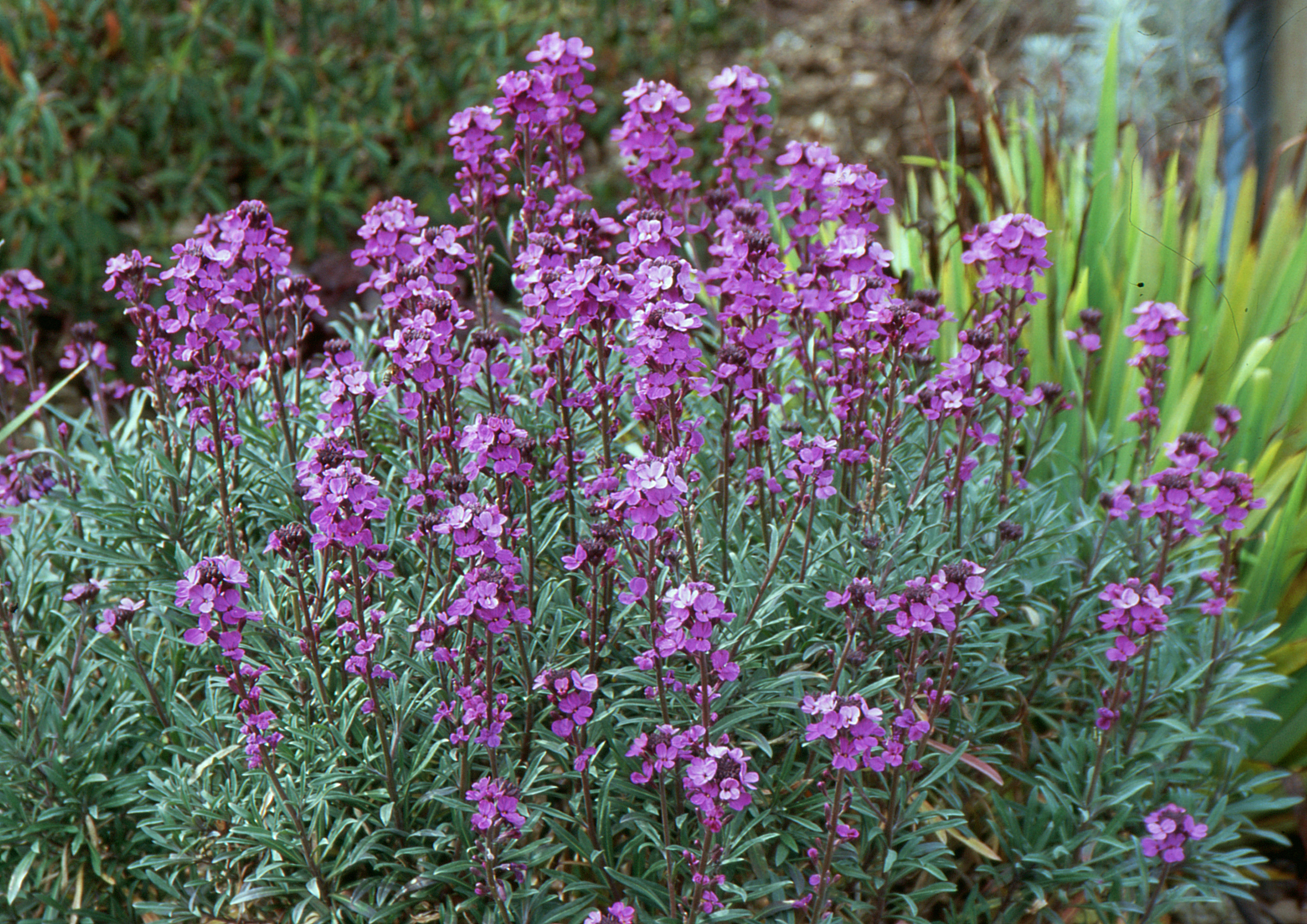
Flowering Time: March to August
Sun requirements: Full sun
Soil: Well-drained, moderately fertile soil, preferably neutral or slightly alkaline (erysimums are good plants for chalk soils).
Hardiness: Hardy in free-draining soils. Can be affected by cold winters if the soil is too heavy and wet.
Size: Grows to 75cm height x 50cm spread
Erysimum ‘Red Jep’

This compact Erysimum variety, Red Jep, has a shade of red, reddish-purple and pinky-orange flowers from mid-spring to the end of summer. This is the ideal plant for a mixed border and does well in coastal areas.
Flowering Time: May to August
Sun requirements: Full sun
Soil: Well-drained, poor to moderately fertile, preferably neutral or alkaline soil
Hardiness: Hardy in free-draining soils. Can be affected by cold winters if the soil is too heavy and wet.
Size: Grows to 30cm height x 50cm spread
Erysimum ‘Fragrant Sunshine’
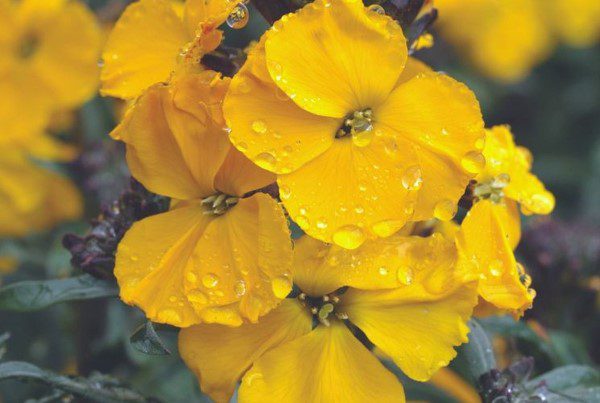
The Erysimum ‘Fragrant Sunshine’ has bright yellow flowers from early spring to early autumn. This is a perfect plant for a mixed border, bringing plenty of brightness and coping well in coastal areas.
Flowering Time: March to September
Sun requirements: Full sun
Soil: Well-drained, poor to moderately fertile, preferably neutral or alkaline soil
Hardiness: Hardy in free-draining soils and copes well even in sever winters
Size: Grows to 45cm height x 50cm spread
Erysimum ‘Winter Light’
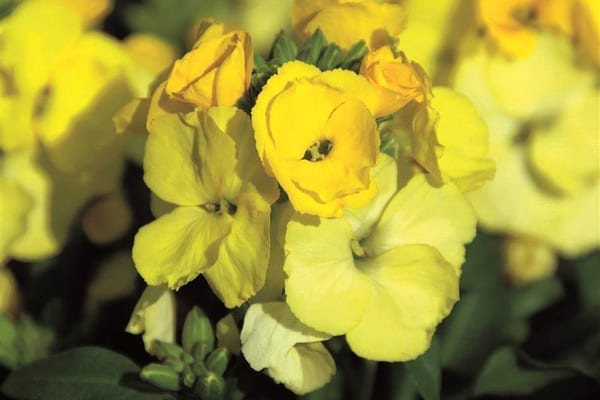
This lower-growing Erysimum variety has bright yellow flowers from mid-spring to the end of summer. This is a perfect plant for a mixed border, bringing plenty of brightness and coping well in coastal areas.
Flowering Time: March to August
Sun requirements: Full sun
Soil: Well-drained, moderately fertile soil, preferably neutral or slightly alkaline (erysimums are good plants for chalk soils).
Hardiness: Hardy in free-draining soils. Can be affected by cold winters if the soil is too heavy and wet.
Size: Grows to 30cm height x 45cm spread
Erysimum ‘Winter Orchid’
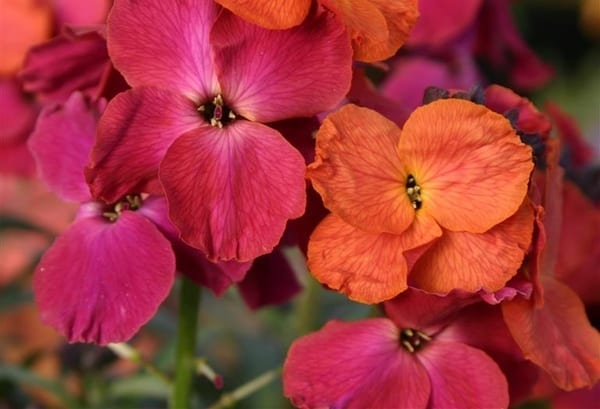
This compact variety has dense racemes of orange flowers from spring into early summer, with the flowers gradually transforming to a rich purple as they age, like the changing shades of a sunset. This is a good plant for a mixed border and does well in coastal areas.
Flowering Time: March to July
Sun requirements: Full sun
Soil: Well-drained, moderately fertile soil, preferably neutral or slightly alkaline (erysimums are good plants for chalk soils).
Hardiness: Hardy in free-draining soils. Can be affected by cold winters if the soil is too heavy and wet.
Size: Grows to 45cm height x 45cm spread
Erysimum ‘Winter Sorbet’
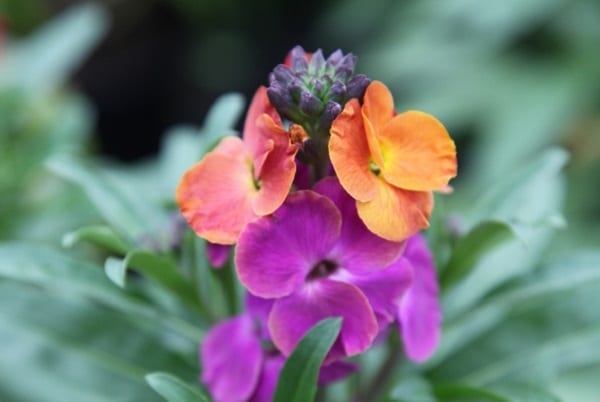
This hardy, upright variety produces flower spikes that emerge burnt orange and mature to lilac-purple from late spring to summer, held on top of linear to lance-shaped dark green leaves. The Winter Sorbet is a good plant for a mixed border and does well in coastal areas.
Flowering Time: March to August
Sun requirements: Full sun
Soil: Well-drained, moderately fertile soil, preferably neutral or slightly alkaline (erysimums are good plants for chalk soils).
Hardiness: Hardy in free-draining soils. Can be affected by cold winters if the soil is too heavy and wet.
Size: Grows to 40cm height x 50cm spread
Erysimum Growing Guide
Planting
When planting your Erysimum, first water the plant in its pot thoroughly. Dig a hole in the soil roughly twice the size of the pot. Add some quality multi-purpose compost to the base of the planting hole. Remove the plant from its pot and place it in the hole so that the top of the rootball is about level with the surrounding soil. Refill the hole with a mixture of garden soil and compost.
Erysimum varieties prefer to be planted in well-drained, moderately fertile soil that is neutral or slightly alkaline. If your soil is heavy and wet, add grit and sand when planting to encourage better drainage. This will also help protect the plant during the winter months.
Pruning
Although wallflowers are known for their copious flowers and long flowering periods, you can encourage more growth by trimming faded and dead flowers. They can flower all year in some parts of the UK’s south!
Watering
Water generously when first planting, and keep the plant well-watered for the first year.
Protection
In colder climates or if your soil is prone to waterlogging, you may want to cover with a cloche during the winter.
Erysimum Planting Ideas

Nepeta ‘Six Hills Giant’ and Forget-Me-Nots make great combination plants with Erysimums because their striking purple and blue hues perfectly complement the vibrant wallflower colours.
Tulips will stand tall against the smaller wallflower varieties, giving added height to a border or planter.
Creeping rosemary will provide a fragrant backdrop of groundcover and add a new texture next to the woody grey-green and dark green wallflower foliage.
Erysimum Facts
1. Wallflowers are a member of the Brassicaceae botanical family, commonly known as the cabbage family.
2. Perennial wallflowers are a good source of nectar for pollinators; with their extremely long flowering season, they can benefit these invaluable garden visitors most of the year.
3. Many varieties are found growing naturally in wall crevices, hence the name and preference for sunny conditions in well-drained soil. They are just as at home, though, in borders and containers.


